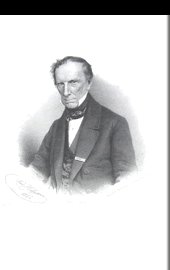A biography of Giovanni Battista Amici
1817-1823 – The trip to Bologna, Florence, Rome and Naples. The camera lucida. Giovanni Battista Amici and Franz Xaver von Zach -  return to index
return to index
In 1817 Amici took his first long trip, travelling from Modena to Naples with stops in Bologna, Florence and Rome. He left home on 22 September and returned on 2 January, 1818. His wife Teresa kept a very useful diary of that experience.
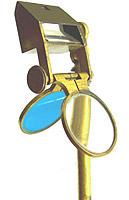 The trip allowed Amici to establish many important contacts and to make his scientific instruments known on a wider scale, since he carried them with him. He received many orders during the trip. There were many important scientists who wanted to meet him and see his “machines”: officials, astronomers, naturalists, geodesists and cartographers. His camera lucida was particularly and immediately successful and this wasn’t due to mere curiosity, as can be seen in the correspondence with Col. Ferdinando Visconti, director of the Royal Topographic Office of Naples. Around the 1820s the relationship of landscape painters with the image was being radically modified by the camera lucida and this little tool, based on the optical principles of the prism, opened new horizons in drawing the territory and in the production of topographic maps.
The trip allowed Amici to establish many important contacts and to make his scientific instruments known on a wider scale, since he carried them with him. He received many orders during the trip. There were many important scientists who wanted to meet him and see his “machines”: officials, astronomers, naturalists, geodesists and cartographers. His camera lucida was particularly and immediately successful and this wasn’t due to mere curiosity, as can be seen in the correspondence with Col. Ferdinando Visconti, director of the Royal Topographic Office of Naples. Around the 1820s the relationship of landscape painters with the image was being radically modified by the camera lucida and this little tool, based on the optical principles of the prism, opened new horizons in drawing the territory and in the production of topographic maps.
On 7 September, 1820, the Baron Franz Xaver von Zach (1754-1832), astronomer from Gotha, was in Bologna where he was observing the ring eclipse of the sun together with the director of the Observatory, Pietro Caturegli. The next day, Zach visited Amici in Modena, together with Capt. William Henry Smyth; it was the beginning of a profitable relationship that lasted five years. Von Zach respected and 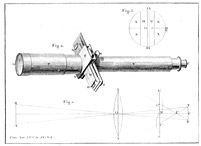 admired the ingenuity of Amici and he had a lively interest for his optical instruments, which he helped make known in the pages of his latest journal, “Correspondance astronomique, hydrographique et statistique” (15 volumes, Genoa 1818-1826). He published seven scientific articles from Amici in four years, specifically: Sur un nouvel instrument de réflexion (VI-1822), Sur les micromètres prismatiques (VIII-1823), Sur la mesure des étoiles doubles (VIII-1823), Sur les limites de la précision à laquelle on peut atteindre avec les meilleurs instrumens astronomiques (IX-1823), Sur un nouveau micromètre intermédiaire (IX-1823), Sur les limites de la visibilités des divisions sur les instrumens d’astronomie (XII-1825), Sur les observations des satellites de Jupiter en plein jour (XII-1825).
admired the ingenuity of Amici and he had a lively interest for his optical instruments, which he helped make known in the pages of his latest journal, “Correspondance astronomique, hydrographique et statistique” (15 volumes, Genoa 1818-1826). He published seven scientific articles from Amici in four years, specifically: Sur un nouvel instrument de réflexion (VI-1822), Sur les micromètres prismatiques (VIII-1823), Sur la mesure des étoiles doubles (VIII-1823), Sur les limites de la précision à laquelle on peut atteindre avec les meilleurs instrumens astronomiques (IX-1823), Sur un nouveau micromètre intermédiaire (IX-1823), Sur les limites de la visibilités des divisions sur les instrumens d’astronomie (XII-1825), Sur les observations des satellites de Jupiter en plein jour (XII-1825).
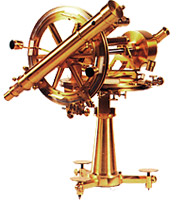 In Volume XIX-1821 of the “Memorie di Matematica e di Fisica della Società Italiana delle Scienze” two articles by Amici were published: Sulla costruzione di un cannocchiale acromatico senza lenti eseguito con un sol mezzo refringente, and Sopra un cannocchiale iconantidiptico (On the construction of an achromatic telescope without lenses, and with a single refractive medium and About an iconantidiptic telescope). The telescope without lenses was made of four glass prisms with flat surfaces, and it was a curiosity which showed how it was possible as long ago as Newton to construct achromatic telescopes without using two differently refracting and dispersive substances and with only one type of glass. The iconantidiptic telescope aimed, instead, to make the wires and the illumination of the field of vision in transit instruments superfluous by doubling the image of the same object with a small glass prism and making the two images move from opposite directions towards each other.
In Volume XIX-1821 of the “Memorie di Matematica e di Fisica della Società Italiana delle Scienze” two articles by Amici were published: Sulla costruzione di un cannocchiale acromatico senza lenti eseguito con un sol mezzo refringente, and Sopra un cannocchiale iconantidiptico (On the construction of an achromatic telescope without lenses, and with a single refractive medium and About an iconantidiptic telescope). The telescope without lenses was made of four glass prisms with flat surfaces, and it was a curiosity which showed how it was possible as long ago as Newton to construct achromatic telescopes without using two differently refracting and dispersive substances and with only one type of glass. The iconantidiptic telescope aimed, instead, to make the wires and the illumination of the field of vision in transit instruments superfluous by doubling the image of the same object with a small glass prism and making the two images move from opposite directions towards each other.
On 26 March, 1822, Amici read at the Academy of Sciences, Letters and the Arts in Modena the description of a new repeating circle in height and in azimuth in which the repetition of the angle took place with the help of a microscope which marked and saved the direction of the stars at the moment in which they were seen by the telescope. In this way the observation wasn’t limited to such a brief period of time for the determination of their zenith distance by multiplying the angles on the circumference of the circle.
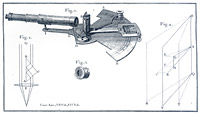 The same year he constructed a navigation instrument as well, a prism reflecting sector greatly appreciated by the Baron von Zach; he helped Amici in the difficult job of procuring the precious optical glass, repeatedly contacting Utzschneider, Ertel and Fraunhofer.
The same year he constructed a navigation instrument as well, a prism reflecting sector greatly appreciated by the Baron von Zach; he helped Amici in the difficult job of procuring the precious optical glass, repeatedly contacting Utzschneider, Ertel and Fraunhofer.
1823 was mostly dedicated to improving the micrometer: Sur les micromètres prismatiques and Nouveau micromètre intermédiaire were published by Zach in “Correspondance astronomique”, together with Sur la mesure des étoiles doubles. By mounting the micrometer between the objective and the eyepiece of large catoptric and dioptric telescopes, Amici could use the micrometer to measure the diameter of the planets, the polar and equatorial diameter of the sun and the distance and position of hundreds of double and triple stars. With some modification of the 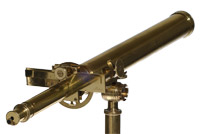 micrometer and the application of small achromatic telescopes, he created a measurer of terrestrial distances. The astronomical observations of Amici were carried out mostly in the 1810s and ‘20s, and we still have many of his handwritten notes which have never been published. These include observations of double and triple stars, measurements of the diameters of the sun and Jupiter, observations of Saturn, eclipses and comets.
micrometer and the application of small achromatic telescopes, he created a measurer of terrestrial distances. The astronomical observations of Amici were carried out mostly in the 1810s and ‘20s, and we still have many of his handwritten notes which have never been published. These include observations of double and triple stars, measurements of the diameters of the sun and Jupiter, observations of Saturn, eclipses and comets.
Bibliography
Peter Brosche, Der Astronom der Herzogin. Leben und Werk von Franz Xaver von Zach (1754-1832), Harri Deutsch, Frankfurt am Main 2001; A. Meschiari, Giovanni Battista Amici e il Reale Officio Topografico di Napoli. Corrispondenza con i Colonnelli Visconti, de Sauget, Melorio, “Physis”, 1-2002; A. Meschiari, Corrispondenza di Giovanni Battista Amici con Franz Xaver von Zach, “Nuncius”, 1-2002; Erna Fiorentini, Nuovi punti di vista. Giacinto Gigante e la camera lucida a Napoli, in Pittura italiana nell’Ottocento, ed. by M. Hansmann and M. Seidel, Marsilio, Venezia 2005, pp. 535-557.
